Cool Robots: Scalable Mobile Robots for Instrument Network Deployment in Polar Climates
LAURA R. RAY, ALEXANDER D. PRICE,
ALEXANDER STREETER, AND DANIEL DENTON
Thayer School of Engineering
Dartmouth College
Hanover, New Hampshire
JAMES H. LEVER
U.S. Army Cold Regions Research and Engineering Laboratory
Hanover, New Hampshire
The Antarctic plateau is a unique location to study the upper atmosphere at high magnetic latitudes because it provides a stable environment for sensitive instruments that measure interactions between the solar wind and the earth’s magnetosphere, ionosphere, and thermosphere. Existing stations on the edge of the continent and at the South Pole, and six low-power (50 W) automatic geophysical observatories, have demonstrated the value of distributed, ground-based observations of solar-terrestrial physics. Increasing the spatial density of these observations offers great scientific opportunities. A National Research Council report, The Sun to the Earth and Beyond, emphasizes the need for mobile instrument networks. The report recommends “comprehensive new approaches to the design and maintenance of ground-based, distributed instrument networks, with proper regard for the severe environments in which they must operate” (NRC, 2002).
This paper describes scalable mobile robots that can enable the deployment of instrument networks in Antarctica. The drivetrain, power system, chassis, and navigation algorithms can be scaled for payloads of roughly 5 to 25 kilograms. One can envision deploying robots from the South Pole to locations on the plateau for long-term or short-term observation and retrieving or repositioning the network through iridium-based communication. Potential missions include: deploying arrays of magnetometers, seismometers, radio receivers, and meteorological instruments; measuring disturbances in the ionosphere through synchronization of Global Positioning System (GPS) signals; using ground-penetrating
radar (GPR) to survey crevasse-free routes for field parties; and conducting glaciological surveys with GPR. Robot arrays could also provide high-bandwidth communications links and power systems for field scientists.
Based on this concept, a single robot is under construction that would carry a triaxial fluxgate magnetometer, an iridium modem, and a modest set of weather instruments. The magnetometer will be a payload test case. Magnetometer arrays are already used in low latitudes and midlatitudes, but polar regions provide unique windows for observing the effects of solar wind on the Earth’s magnetosphere. With mobile networks, sensor locations could potentially be tuned to events in the magnetosphere. Also, synchronized data from polar networks could potentially discover spatial characteristics of narrow-band spectral features in geomagnetic field data, identify magnetospheric boundaries, and refine models accordingly (Lanzerotti et al., 1999).
The deployment of a remote observatory on the Antarctic plateau via transport and small aircraft is expensive and entails dangerous takeoffs and landings at remote sites. For large-scale, widely distributed (>500 km radius) networks, relatively low-cost mobile robots could substantially reduce per-instrument deployment costs. Semiautonomous network deployment would also free limited aircraft and human resources for other missions.
The harsh weather of polar environments, long-range requirements, navigation issues, and variable terrain pose significant design challenges for inexpensive unmanned vehicles. Instruments would be deployed for long periods of time in drifting snow and will require a stable environment with low vibration and electromagnetic noise. Robots and deployed sensors should be retrievable with high reliability to minimize environmental impact and cost. In this paper, related robotics research is summarized, including mobile robot design concepts for polar environments, technical challenges associated with their development, and enabling technologies for cost-effective mobile robots.
STATE-OF-THE-ART ROBOTS FOR EXTREME ENVIRONMENTS
NOMAD, a gasoline-powered robot for polar and desert environments, was developed at Carnegie Mellon University (Apostolopoulos et al., 2000; Carnegie Mellon University, 2004b). NOMAD, which is 2.4 × 2.4 × 2.4 m in size and weighs 725 kg (Figure 1), can travel up to 50 centimeters per second (cm/s) and deploy instruments, such as a magnetometer. In 1997, NOMAD executed its first mission in the Atacama Desert of southern Chile, traversing 223 km through teleoperation. Subsequently, NOMAD successfully found and classified five indigenous meteorites on an Antarctic mission. For our purposes, however, NOMAD’s large size, high cost, and nonrenewable fuel are disadvantages. In addition, its deployment experience suggests that navigation cameras may work poorly in polar climates due to reflection of sunlight off of the snowfield.
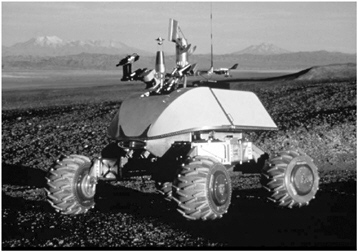
FIGURE 1 NOMAD gasoline-powered robot. Source: Carnegie Mellon University, 2004b. Reprinted with permission.
Spirit and Opportunity are Mars exploration rovers developed by the National Aeronautics and Space Administration Jet Propulsion Laboratory. Each 2.3 × 1.6 × 1.5-m rover weighs 174 kg and has a top speed of 5 cm/s (NASA/ JPL, 2004). The power source for Mars rovers, a multipanel solar array and two rechargeable lithium-ion batteries, enables the rover to generate 140 W of power for four hours per sol, when the panels are fully illuminated. The warm electronics box, which contains the batteries, electronics, and computer, can only operate in the range of –40°C to +40°C. Gold-painted, insulated walls, solid silica aerogel, thermostat and heaters, and a heat rejection system protect the body from the 113°C temperature swing during the Martian day. The payload includes a panoramic camera, a miniature thermal emission spectrometer, a Mössbauer spectrometer, an alpha-particle X-ray spectrometer, and a rock abrasion tool. Each of the six wheels is driven by its own in-wheel motor, and the two front and two rear wheels have steering motors for point turns. The rovers are well suited for their mission on Mars but are too expensive for the deployment of instrument networks.
Hyperion (Figure 2), designed for sun-synchronous exploration, is a 157-kg, 2 × 2.4 × 3-m vehicle that includes a 3.45-m2 nearly vertical solar panel; its maximum speed is 30 cm/s (Carnegie Mellon University, 2004a; Wettergreen et al., 2001). The chassis is intentionally simple—a 1.5 N-m, 150 W brushless DC motor combined with a harmonic drive for an 80:1 reduction ratio drives a wheel through a bicycle chain. A passively articulated steering joint provides two free rotations, enabling moderate maneuverability and mechanical simplicity. This
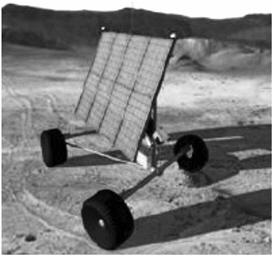
FIGURE 2 Hyperion rover. Source: Carnegie Mellon University, 2004a. Reprinted with permission.
design has many appealing features for instrument-network deployment, including renewable fuel, simplicity, and potentially low cost.
Commercial all-terrain robots made by iRobot and ActivMedia weigh 39 to 100 kg and carry payloads of 7 to 100 kg. Powered by two DC servomotors and a 4-wheel differential-drive system, these battery-operated robots run for 2 to 6 hours at speeds between 1 and 2 m/s. With no navigation instruments or software, these robots cost from $7,000 to $22,000. They could potentially be retrofitted for solar-power operation, but they are not designed for low-temperature operation, and the solar panels alone could comprise the entire payload budget.
COOL ROBOT CONCEPT
Our robot is designed to operate in interior Antarctica, which is characterized by low snowfall, moderate winds, and extreme cold. We envision networks of robots, guided by GPS and onboard sensors, that are launched and retrieved from the South Pole Station during the austral summer. Key design issues are outlined below.
Figure 3 shows a satellite photo of Antarctica. The vast central plateau covers more than five million square kilometers of relatively flat, crevasse-free terrain. A second large area of operation is the Ross Ice Shelf. Generally, Antarctic snowfields consist of dense, windblown snow. Aside from wind-sculpted sastrugi, dune-like features that are identifiable on satellite imagery, there are few obstacles. The central plateau receives less than 50 mm precipitation (<500 mm snowfall) in an average year. During summer months at the South Pole,
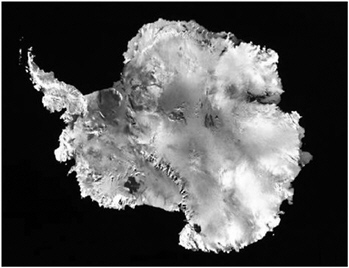
FIGURE 3 Satellite photo of Antarctica. Source: USGS, 2004.
wind speed averages 2 m/s (Valenziano and Dall’Oglio, 1999), and the five-year maximum speed is 20.5 m/s (CMDL, 2004). The average daily temperature is –20°C to –40°C.
An Antarctic robot must traverse firm snow and occasional softer drifts, sustain mobility in windy conditions, have a minimal environmental impact, and operate in temperatures down to –40°C. We envision a lightweight, solar-powered, wheeled robot that can be transported in a Twin Otter aircraft and is capable of traversing 500 km within two weeks. After reaching a target location, the robot could collect data over a period of two to three months before returning to the South Pole for the winter. The design includes a low center-of-gravity vehicle with four direct-drive brushless electric motors, an enclosed thermally controlled volume for instrumentation and batteries, and a solar panel “box” for renewable energy. Table 1 provides design specifications for a wheeled robot and a price point for economic viability for the deployment of networks of such robots.
Motion resistance in snow is attributable to sinkage and varies with the firmness of the snow pack immediately in front of the wheel, the length of the tire in contact with the snow, and the width of the tire (Richmond et al., 1995). Given the target ground pressure (< 20 kPa) in the dense snow of the Antarctic plateau, sinkage should be small. The estimated total resistance of 0.25 for a 90-kg vehicle will require a net traction force of 221 N. Travel of 500 km in two weeks will require an average speed of 0.41 m/s, with an average power requirement of 90 W and maximum power of 180 W for the top speed of 0.8 m/s. Allowing up to 40 W for housekeeping power and power-system efficiencies, the target power budget is approximately 220 W.
Table 1 Robot Specifications
|
Maximum speed |
≥ 0.80 m/s |
|
Mass (excluding payload) |
≤ 75 kg |
|
Payload mass |
≥ 15 kg |
|
Ground pressure |
≤ 20 kPa |
|
Operating temperature range |
0 C to –40 C |
|
Dimensions |
≤ 1.4 × 1.15 × 1-m |
|
Cost |
≤ $20000 |
Despite a harsh climate and low sun angles, Antarctica is an ideal place for a solar-powered robot. The summer sun provides a 24-hr energy source, and the central plateau receives scant precipitation and infrequent fog. The Antarctic plateau is nearly completely covered in snow, with albedo averaging 95 percent across visible and ultraviolet wavelengths (Grenfell et al., 1994) and fairly uniform scattering in all directions (Warren et al., 1998). The high altitude and dry air block less incoming radiation, and there is a small benefit due to the proximity of the Earth to the sun during the summer. The sun remains at approximately the same elevation throughout the day (especially near the South Pole), resulting in relatively constant energy input. With low elevation angles and significant reflected solar energy, nearly vertical solar panels will be optimal. Also, the efficiency of solar cells increases as temperature decreases.
Average horizontal insolation data for 2002 (Figure 4) show a range of horizontal irradiance of 300 to 500 W/m2 at the South Pole (CMDL, 2004). Adjusting for sun elevation angle gives a net insolation between 800 W/m2 and 1,200 W/m2, which is consistent with earlier studies (Hanson, 1960). At other locations in Antarctica where cloud cover and fog are more frequent, the average insolation is about half this, but the sunny days are almost as bright. For comparison, consider a clear winter day in New England. At a sun elevation of 20 degrees, the total insolation is between 600 and 800 W/m2. Table 2 summarizes insolation data at various locations on the Antarctic continent and elsewhere. The average solar energy input during the November to February operating window is approximately 1,000 W/m2, with an average sun elevation of about 20 degrees.
To determine the optimum size of the solar panel, we developed a model to predict power as a function of solar insolation, sun elevation, and azimuth for solar panels in a snowfield. The model assumes diffuse reflection from the snow at a specified albedo. We validated the model using data collected with a commercial 20-W panel during January-February 2004 in Hanover, New Hampshire. Figure 5 shows the resulting robot design concept—a wheeled chassis enclosed by a five-panel box—along with predicted panel capacities extrapolated from the model for nominal Antarctic solar radiation, 20 degree sun elevation, and 90 percent albedo. The panel outputs are reported as a percentage of their standard
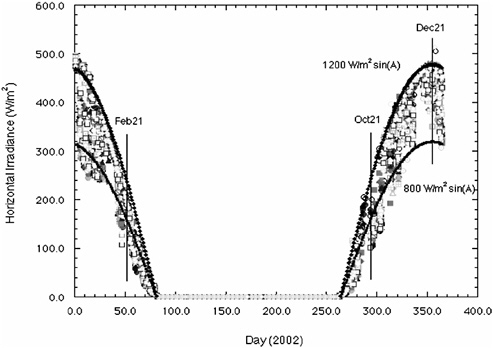
FIGURE 4 Daily average horizontal insolation at the South Pole, 2002. Source: CMDL, 2004.
Table 2 Insolation for Various Sun Conditions
|
Condition/Location |
Nominal Insolation |
|
Max. for Antarctica, continent |
1200 W/m2 |
|
Avg. for South Pole, Nov-Feb |
1000 W/m2 |
|
Avg. for South Pole, at solstice |
1100 W/m2 |
|
Avg. for south polar plateau |
> 800 W/m2 |
|
Avg. for Ross Ice Shelf |
400 W/m2 |
|
Jan 2004 measurements, Hanover, NH |
660 W/m2 |
capacities (rated at 1,000 W/m2 insolation). The front panel (directly facing the sun) has a capacity of 128 percent (more than 100 percent due to reflected energy). Significantly, the top and side panels contribute nearly as much power as the panel facing the sun. Even the back panel receives substantial radiation because the robot’s shadow is not as large as the area of snow that reflects light to the panel.
Enabling technology for the robot is the affordable, 20 percent efficient, A-300 solar cell by Sunpower, Inc., which became available in 2003. Figures 6 and
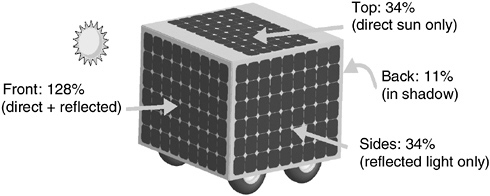
FIGURE 5 Panel power capacities in nominal Antarctic sun.
7 show predicted power available to the motors for a robot using 54 of these cells per panel (each cell is 12.5 × 12.5 cm) at 1,000 W/m2 insolation and 90 percent albedo. The resulting robot will fit in the Twin Otter cargo bay. These results include efficient maximum-power-point-tracking (MPPT) circuits for each panel and subtract housekeeping power. The robot can drive at full speed even in below-average insolation. Under minimal insolation, the robot still has enough power to drive slowly or charge the batteries and drive in short bursts on battery power. Diffuse incoming radiation—light scattered by the atmosphere—is an unmodeled benefit because diffuse light is expected to be received perpendicular
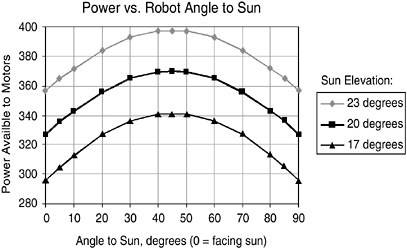
FIGURE 6 Power availability as a function of sun elevation angle and the robot azimuth angle.
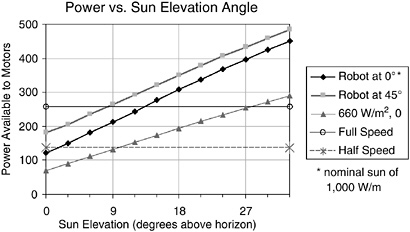
FIGURE 7 Power available and required at various sun angles.
to the panels from all directions. The total diffuse radiation is expected to be 50 to 100 W/m2 providing 40 to 80 W, enough to drive the robot in bursts and maintain instrument operation (Hanson, 1960).
A positive feature of the deployment of instruments on the Antarctic plateau is relatively flat, straight paths on dense snow, which minimizes planning the complexity of the path. One of the most promising navigation architectures for such paths is “mixed-mode” operation, which mimics human behavior (e.g., in hiking a known path over a long distance) (Simmons et al., 1995). The global objective is to stay on the path, but a local mode, in which the hiker goes around unanticipated objects (e.g., downed trees), is in force for short periods, after which the hiker returns to the path. In the initial stages of research, global navigation is being used, primarily through GPS and speed control, with sensors to detect unbalanced wheel speeds and hence potential problems with traction, and low-bandwidth path-correction algorithms to reduce “dither” around the path. In the traversal of long distances, GPS-induced path deviations are tolerable. Traction control can be layered onto the basic global path-following algorithm, along with sensors for tilt and wheel slip. Local-mode navigation would be invoked if sensors detect extreme tilting or slippage.
Navigation and motion control also depend on the power system. The robot will move along the path only when adequate solar power is available. In cloudy conditions, the robot will move under battery power if necessary to prevent drifting in, and in windy conditions, the robot may face a direction that minimizes drag and the potential for tipping. We do not anticipate the robot having a vision system because sastrugi are visible on satellite imagery and can be avoided through route selection. The lack of contrast in snow-covered terrain would make onboard navigation challenging and potentially expensive.
DESIGN EMBODIMENT AND ENABLING TECHNOLOGIES
We have attempted to minimize vehicle mass by using stiff honeycomb composites for the solar panels and chassis and custom-designed wheel rims and hubs. The enabling technologies and cost-design trade-offs and an estimate of the costs of parts and the mass for the prototype robot are highlighted below.
Because of their newness, complete panels for A-300 solar cells are not yet available. Moreover, traditional panel construction with its steel backing is not viable for the robot. Thus, we will construct the solar panels in house, using quarter-inch honeycomb sandwich panels (Nomex core with fiberglass facing). The cell will be encapsulated in silicone. Similar honeycomb composite will be used to make the chassis box (Figure 8). The construction and joinery of honeycomb panels are mature technologies in the aerospace field, and these materials supply area densities of 1.4 kg/m2 for solar panels and 2.5 kg/m2 for chassis walls.
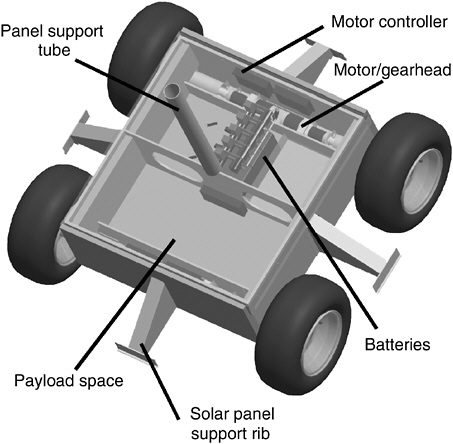
FIGURE 8 Internal chassis and components.
The wheels are sized to provide adequate ground clearance and low rolling resistance. We considered many different tires and trade-offs between traction, weight, pressure, and rolling resistance. Taking into account availability and cost, a 16 × 6–8 ATV tire, which has low mass and excellent traction, was selected. Low-mass rims and hubs are not available for ATV tires, however, so these were custom designed and machined in house to meet the strength and deflection requirements for a 90-kg robot. For a mass-produced robot, rims and hubs could be cast or stamped at low cost.
High-efficiency, brushless motors with 90 percent efficient gear trains and lubricant for operation at –50°C drive the wheels directly. Each motor has a controller that can be configured for speed or torque control. We tested a single motor-gearbox combination in a cold room in a box insulated as configured on the robot. The results showed that both long-term operation and start-stop operation would be efficient, and controllability would be maintained at cold temperatures.
The power-system architecture includes three lithium-ion batteries in series and five solar panels, each of which can operate under varying insolation and temperature conditions. To deliver power to a common power bus, each panel requires an MPPT, a device that allows each panel to operate at the bus voltage established by the batteries while meeting power demands for the motors. Custom-designed MPPTs that weigh less than 250 grams and have better than 97 percent efficiency have been designed and constructed.
We estimate that the five-panel robot, without payload, will weigh ~73 kg, with a total material cost of less than $15,000. The design is relatively insensitive to payload up to about 20 kg. The robot will be equipped with instruments to assess power-input and mobility models during field trials in Antarctica, anticipated for the 2005–2006 austral summer.
CONCLUSION
Solar-powered mobile robots for operation on the Antarctic plateau are feasible in terms of power availability, mechanical design, and power-system design. Waypoint navigation on the relatively obstacle-free plateau through GPS can provide long-distance travel appropriate to the scientific missions envisioned. Mobile robots capable of reliable, long-term operation on the Antarctic plateau can potentially advance scientific research through instrument deployment, mapping, and the provision of portable mobile power.
REFERENCES
Apostolopoulos, D., M.D. Wagner, B. Shamah, L. Pedersen, K. Shillcutt, and W.L. Whittaker. 2000. Technology and field demonstration of robotic search for antarctic meteorites. International Journal of Robotics Research 19(11): 1015–1032.
Carnegie Mellon University. 2004a. Hyperion: Sun Synchronous Navigation. Available online at: <http://www.ri.cmu.edu/projects/project_383.html> (June, 2004).
Carnegie Mellon University. 2004b. Robotic Antarctic Meteorite Search: The NOMAD Robot. Available online at: <http://www.frc.ri.cmu.edu/projects/meteorobot/Nomad/Nomad.html#Mechanical> (June, 2004).
CMDL (Climate Monitoring and Diagnostic Laboratory). 2004. Daily Average Horizontal Insolation at the South Pole. Available online at: <http://www.cmdl.noaa.gov/info/ftpdata.html> (March, 2004).
Grenfell, T.C., S.G. Warren, and P.C. Mullen. 1994. Reflection of solar radiation by the Antarctic snow surface at ultraviolet, visible, and near-infrared wavelengths. Journal of Geophysical Research 99(D9): 18-669–18-684.
Hanson, K.J. 1960. Radiation studies on the south polar snowfield. IGY Bulletin 31: 1–7. Washington, D.C.: National Academy of Sciences.
Lanzerotti, L., A. Shona, H. Fukunishi, and C.G. Maclennan. 1999. Long-period hydromagnetic waves at very high geomagnetic latitudes. Journal of Geophysical Research 104(A12): 8, 423.
NASA/JPL (National Aeronautics and Space Administration Jet Propulsion Laboratory). 2004. Spacecraft: Surface Operations: Rover. Available online at: <http://www.marsrovers.jpl.nasa.gov/mission/spacecraft_rover_energy.html> (June, 2004).
NRC (National Research Council). 2002. The Sun to the Earth and Beyond: A Decadal Research Strategy in Solar and Space Physics. Washington, D.C.: National Academy Press.
Richmond, P.W., S.A. Shoop, and G.L. Blaisdell. 1995. Cold Regions Mobility Models. CRREL Report 95-1. Hanover, N.H.: Cold Regions Research and Engineering Laboratory. Available online at: <http://www.stormingmedia.us/82/8273/A827392.html>.
Simmons, R., E. Krotkov, L. Chrisman, F. Cozman, R. Goodwin, M. Hebert, L. Katraqadda, S. Koenig, G. Krishnaswamy, Y. Shinoda, W. Whittaker, and P. Klarer. 1995. Experience with Rover navigation for lunar-like terrains. Journal of Engineering and Applied Science 1: 441–446.
USGS (U.S. Geological Survey). 2004. Satellite Image Map of Antarctica. Available online at: <http://terraweb.wr.usgs.gov/TRS/projects/Antarctica/AVHRR.html> (June, 2004).
Valenziano, L., and G. Dall’Oglio. 1999. Millimetre astronomy from the high Antarctic plateau: site testing at Dome C. Publications of the Astronomical Society of Australia 16: 167–174.
Warren, S.G., R.E. Brandt, and P. O’Rawe Hinton. 1998. Effect of surface roughness on bidirectional reflectance of Antarctic snow. Journal of Geophysical Research 103(E11): 25-789–25-807.
Wettergreen, D., B. Shamah, P. Tompkins, and W.L. Whittaker. 2001. Robotic Planetary Exploration by Sun-Synchronous Navigation. In Proceedings of the 6th International Symposium on Artificial Intelligence, Robotics and Automation in Space (i-SAIRAS 2001), Montreal, Canada, June 2001.












